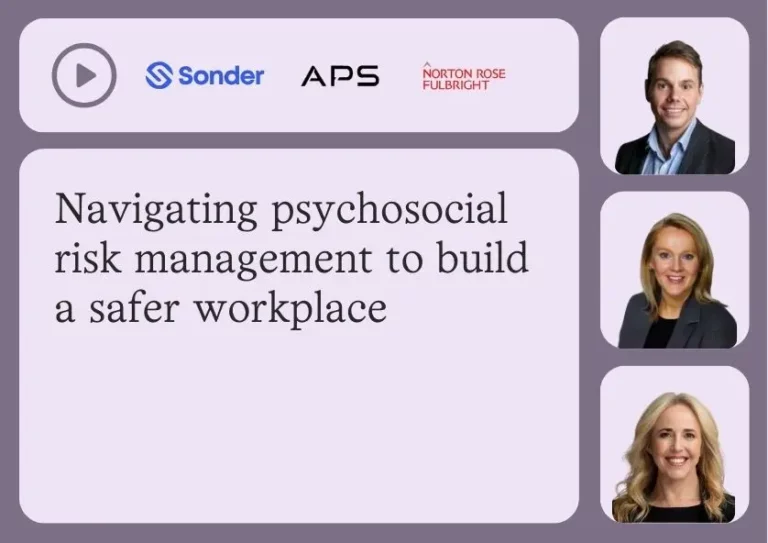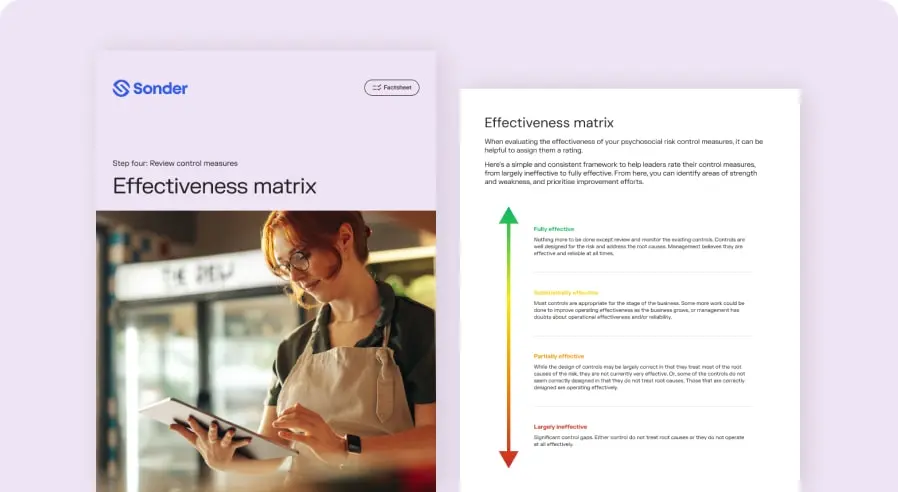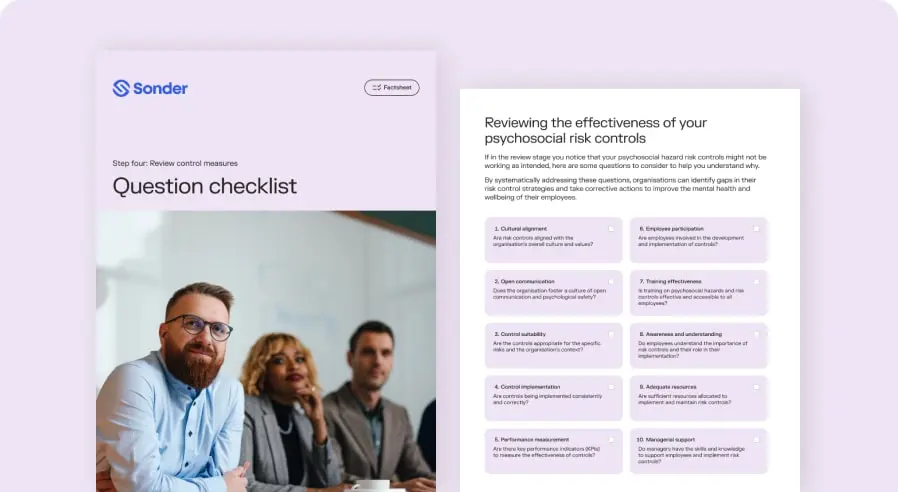
Try our risk control review tools and templates
Regularly review risk controls
Psychosocial risk management isn’t just about identifying hazards and implementing strategies to mitigate these risks. In fact, monitoring and assessing the effectiveness of your controls is arguably the most crucial part of the risk mitigation process.
Leaders need to establish mechanisms to continuously monitor the effectiveness of control measures and provide channels for employees to share feedback.


Reviews shouldn't just happen periodically
There may be situations where an immediate review of control effectiveness may be necessary. Examples include a complaint of bullying or harassment, the identification of a new hazard (for example a new system that requires additional training and increased responsibilities), significant organisational changes, or requests for review from employees, teams, or inspectors.
“Regulators are sophisticated. They are very active and they will ask about the effectiveness of controls. They will require information that reveals their effectiveness… so the legal risk in this area is high.”

Health and Safety Specialist and Partner at Norton Rose Fulbright







